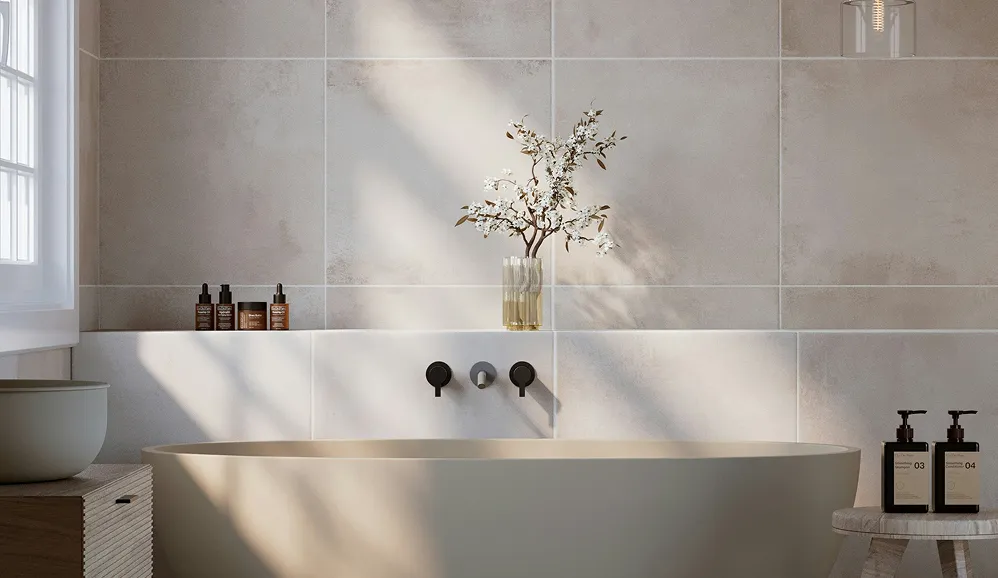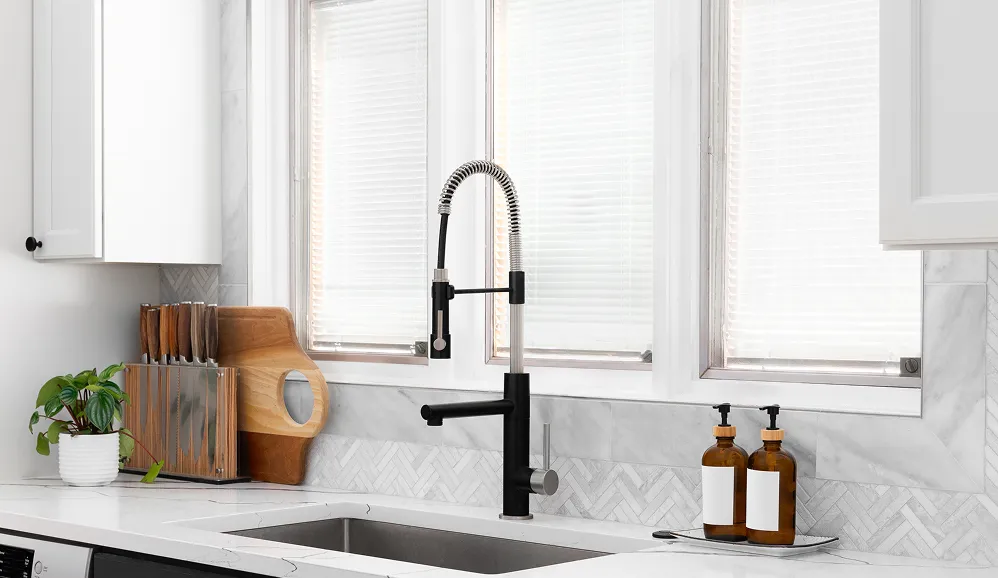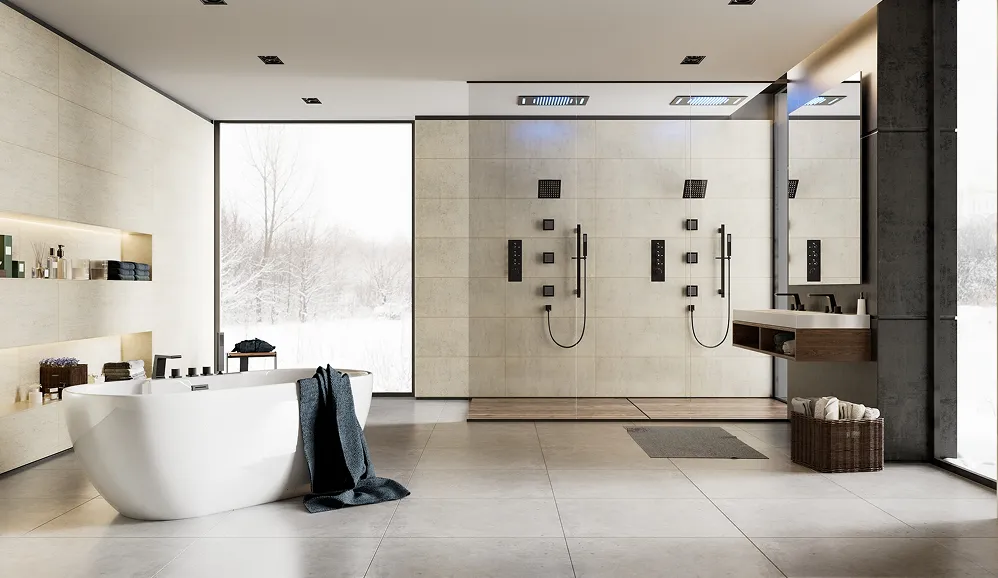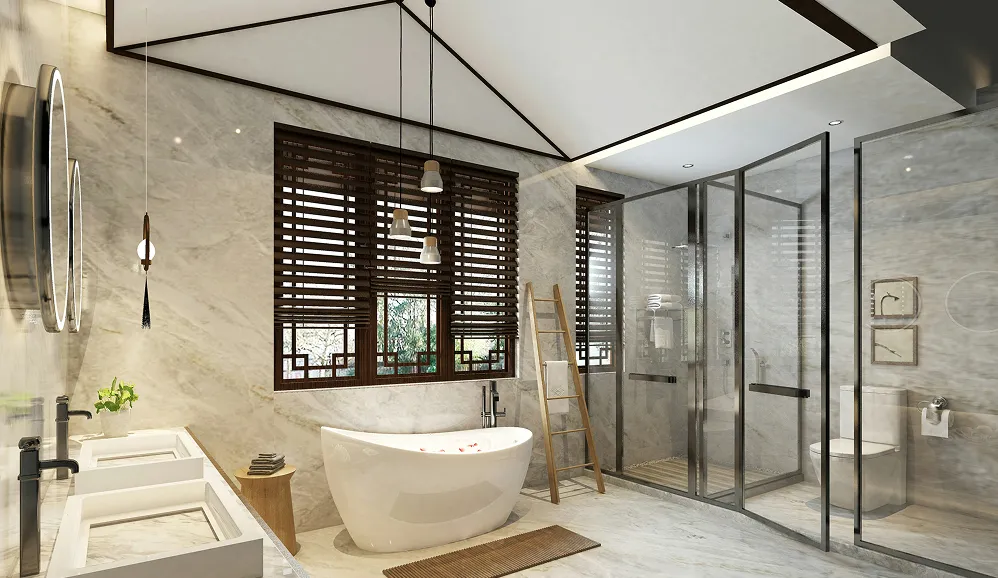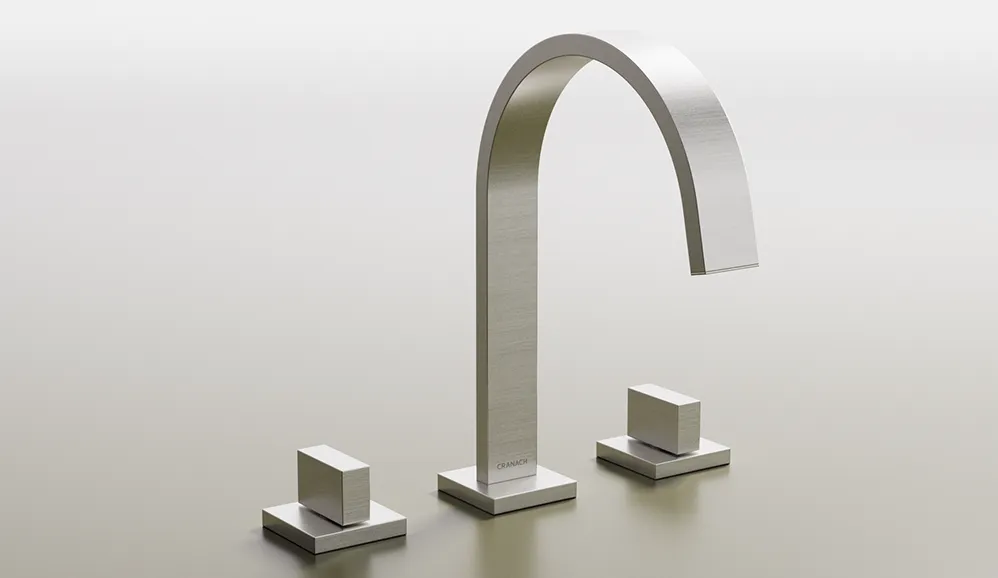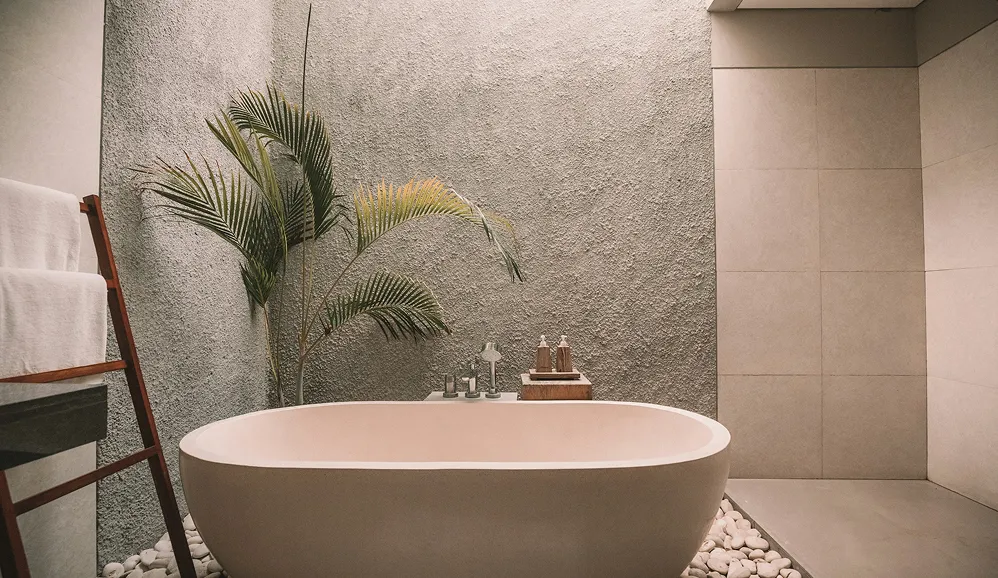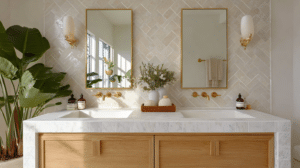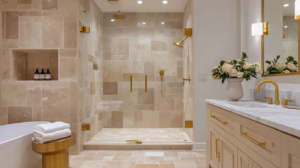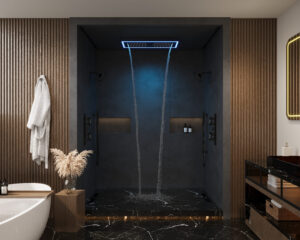So, how much is a walk in shower conversion? The honest answer is, it really depends on how big you want to go. A straightforward project using a prefabricated kit might only set you back around $1,500. But if you’re dreaming of a fully custom, spa-like retreat with high-end tile and luxury fixtures, the budget can easily climb past $15,000.
It’s like the difference between buying a reliable family sedan and a custom sports car. Both will get you where you need to go, but the experience, the features, and the final price tag are in completely different leagues.
Unpacking the Costs of Your Shower Transformation
Switching from a tub to a walk-in shower is one of the most popular upgrades homeowners make, and it’s easy to see why. It gives your bathroom a modern facelift, makes it more accessible, and can seriously elevate your daily routine. The only tricky part is that the price can vary so wildly, leaving a lot of people scratching their heads about what to budget.
Let’s look at the numbers. Industry data from sources like the National Kitchen & Bath Association (NKBA) shows that converting a bathtub to a walk-in shower typically lands around the $3,000 mark. However, that’s just an average. The full spectrum is huge, running anywhere from $800 for a simple swap to $15,000 for a major overhaul. Most homeowners, though, will see their final bill fall somewhere between $1,500 and $8,000.
The path you take makes all the difference. Are you looking for a quick and efficient update, or are you ready to tear things down and start fresh with a total redesign? Your answer to that question is what will really shape your budget.
To give you a clearer picture of what your project might cost, we’ve put together a table outlining the typical ranges for different types of conversions.
Estimated Cost for Walk-In Shower Conversion Types
This table breaks down the average costs you can expect for different project types, from simple kits to completely custom designs.
| Conversion Type | Average Cost Range | Best For |
|---|---|---|
| Prefabricated Kit | $1,500 – $5,000 | Budget-conscious homeowners who want a fast, straightforward installation with standard sizes. |
| Semi-Custom | $4,000 – $9,000 | Those who want more design flexibility with tile and fixture choices without a full custom build. |
| Fully Custom | $8,000 – $15,000+ | Homeowners aiming for a high-end, spa-like experience with unique layouts, premium materials, and luxury features. |
As you can see, the more you customize, the more the investment grows. It’s all about balancing your vision with your wallet.
For a broader perspective on how this fits into a full remodel, this Australian Cost of Bathroom Renovation Guide offers some great insights.
Decoding the Key Cost Drivers of Your Project
So, why does the price for a walk-in shower conversion swing so dramatically from one project to the next? Think of the final cost as a puzzle built from several key pieces. When you understand these individual components, you get a clear picture of where your money is going. More importantly, it empowers you to make smart decisions that balance your dream shower with a real-world budget.
The following visual breaks down the main factors that come together to form the total cost of your conversion.
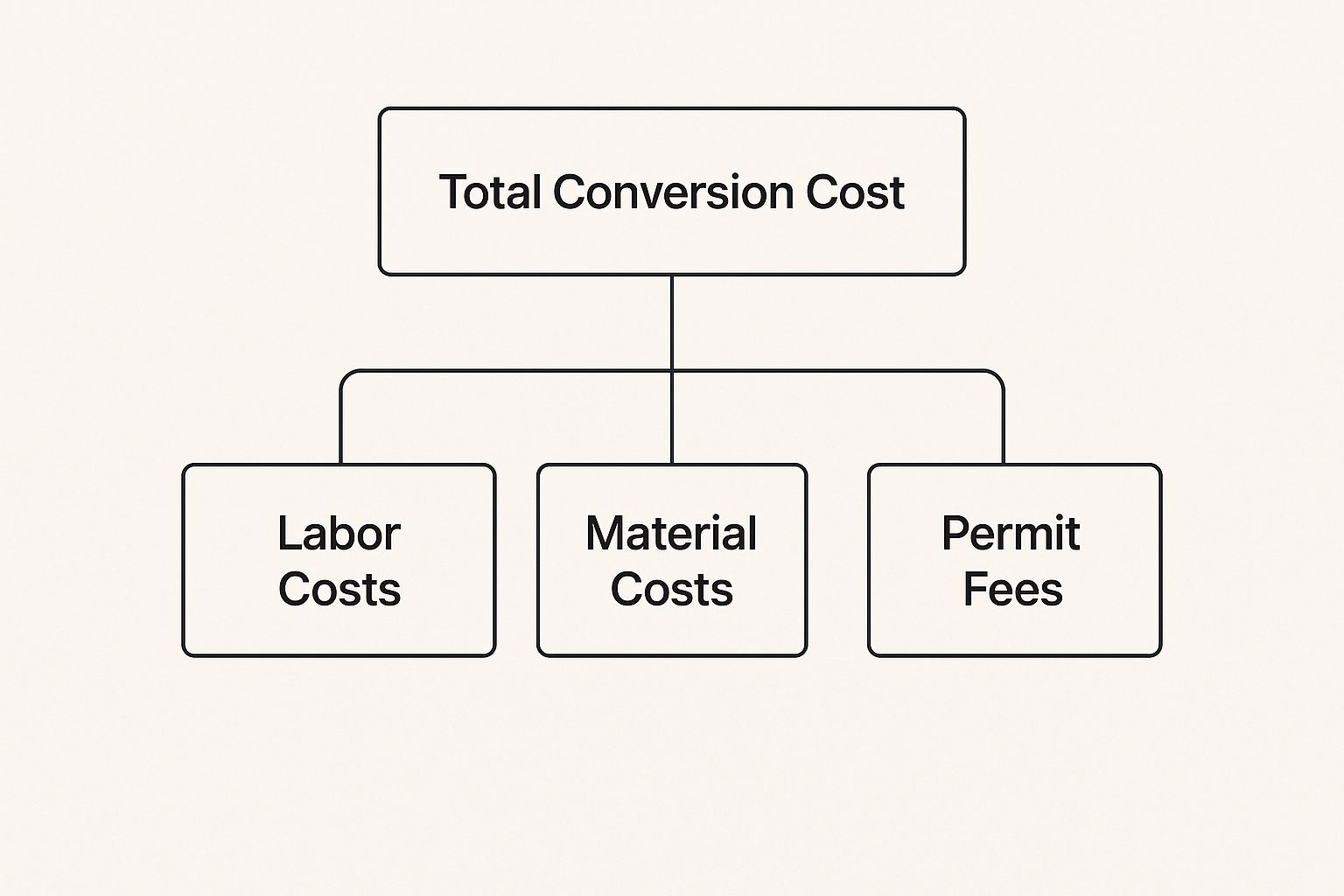
As you can see, your total expense is a blend of labor, materials, and any potential permit fees. Each one plays a big part in shaping that final number on the invoice.
Materials: The Foundation of Your Budget
Your choice of materials is almost always the single biggest factor driving the final price tag. This is where your design vision directly translates into dollars and cents.
- Budget-Friendly Options: Prefabricated acrylic and fiberglass shower pans and wall surrounds are your most affordable route. They offer a clean, simple look and are much faster to install, which also shaves down those labor costs.
- Mid-Range Choices: Ceramic and porcelain tiles open up a massive world of styles, colors, and textures. While they cost more than prefabricated units—both for the tiles themselves and the more intensive labor—they deliver a durable and classic finish that stands the test of time.
- Premium Selections: This is where you find the peak of luxury and cost. High-end materials like natural stone (think marble, granite, or slate), solid surface panels, and fully custom glass enclosures require specialized, expert installation, which adds significantly to the overall expense.
Labor: The Hands-On Costs
Labor isn’t just about slotting the new shower into place; it’s a multi-step process that can get complicated. A fully custom walk-in shower conversion is a whole different ballgame than a simple tub-to-shower swap. In fact, a custom job can average around $8,000, with labor alone contributing anywhere from $400 to $2,000 of that total. Depending on the complexity, plumbers and specialized remodelers might charge between $30 and $200 per hour.
Often, a walk-in shower conversion is just one part of a much larger bathroom refresh. For a complete look at what goes into a full project, this guide to planning a bathroom renovation is a fantastic resource that covers all the different pieces that lead to a successful outcome.
Fixtures and Features: The Finishing Touches
Finally, the fixtures you choose—especially the shower system—play a huge role in both the final cost and your daily experience. A basic, single-function shower head will certainly get the job done on a tight budget. But upgrading to a high-quality shower system is what truly elevates the entire space from functional to phenomenal.
For instance, a modern shower system from a trusted brand like CRANACH introduces features like precise thermostatic temperature control and multiple spray functions. It’s a bigger initial investment, absolutely, but it pays you back every single day with added comfort, safety, and long-term value. You can dive deeper by checking out our detailed breakdown of walk-in shower costs.
Choosing the Right Shower Materials and Design
The look, feel, and long-term durability of your new shower really boil down to two things: the materials and the design. This is where your vision starts to become a reality, and your choices here will have the biggest impact on the final answer to how much is a walk in shower conversion.
Think of your project as being at a fork in the road. One path leads to a prefabricated shower kit—a fast, straightforward, and budget-friendly solution. The other path goes to a fully custom-tiled shower, which opens up nearly endless creative freedom but comes at a higher price.
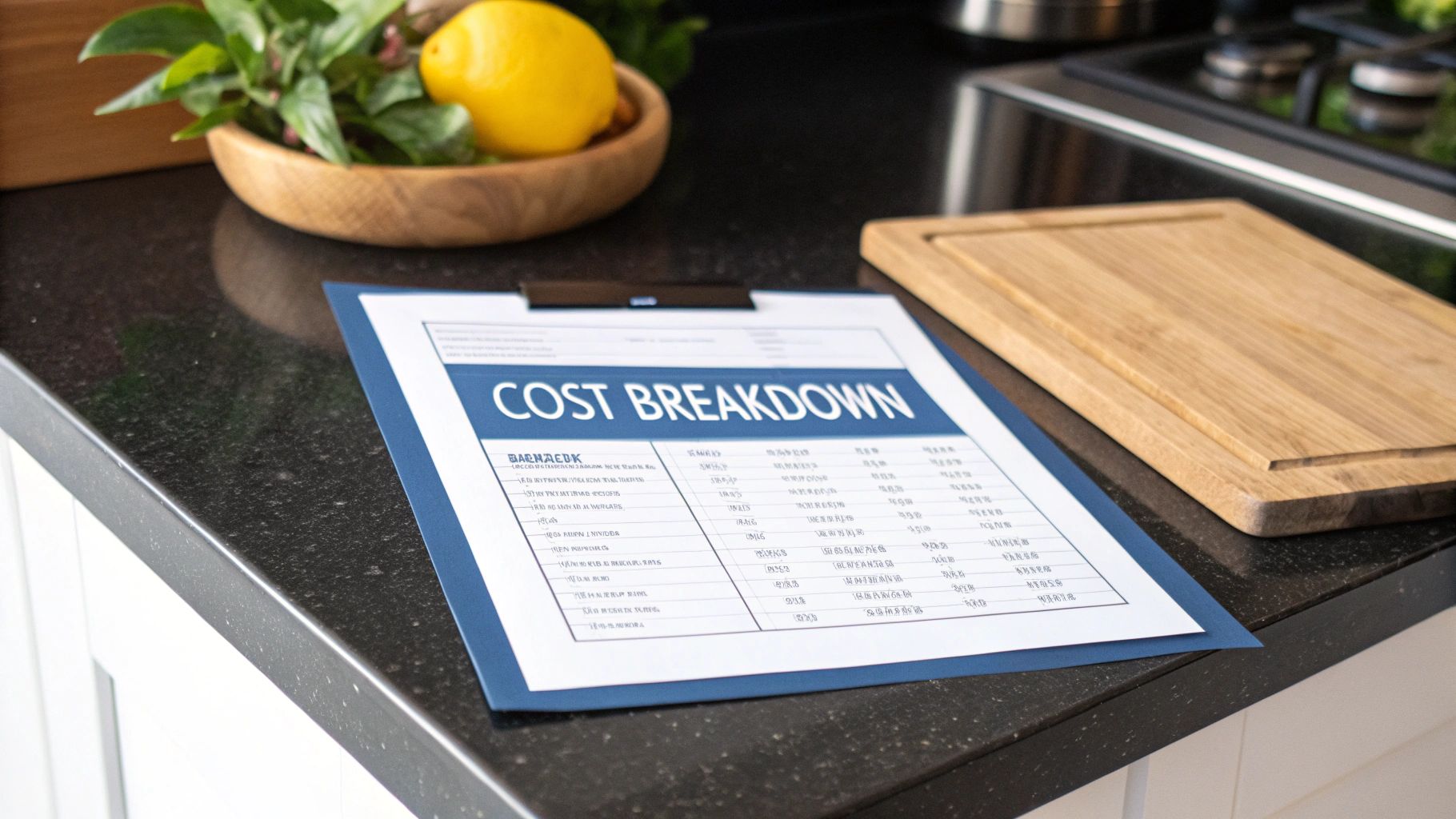
Prefabricated Kits vs. Custom Tile Showers
Prefabricated kits, usually made from acrylic or fiberglass, are the go-to choice if you’re prioritizing speed and affordability. They arrive as either a single complete unit or in large, interlocking pieces, which dramatically cuts down on installation time and labor costs. In fact, these kits are a major reason why basic conversions can stay on the lower end of the cost spectrum, sometimes falling between $1,500 and $7,000.
Custom-tiled showers, on the other hand, are built completely from scratch right in your bathroom. This approach lets you create unique sizes, interesting layouts, and intricate designs using materials like ceramic, porcelain, or even natural stone. While you get total design flexibility, the meticulous labor involved—waterproofing, setting each tile, and grouting—drives the cost up quite a bit.
Choosing between a kit and custom tile isn’t just about the budget; it’s about what you value most. A prefab kit is all about function and speed, while a custom build is for someone who wants personalized aesthetics and a truly bespoke feel.
The Impact of Wall Surrounds and Floors
Your choice for the shower walls and floor is a big deal, affecting both how your shower looks and how much effort it takes to maintain.
- Ceramic and Porcelain Tile: These are classics for a reason. They’re incredibly durable, water-resistant, and come in a mind-boggling array of styles and colors. The only catch is that the grout lines need regular cleaning to keep mildew at bay.
- Natural Stone: If you’re aiming for a luxurious, high-end look, materials like marble or slate are stunning. They do come with a premium price tag and require periodic sealing to protect them from stains and water damage.
- Solid Surface Panels: For a modern, seamless look with zero grout lines to scrub, solid surface panels are a fantastic option. They are a mid-to-high-end choice that combines sleek design with incredibly low maintenance.
Shower Enclosures and Fixtures
The last major design piece is the enclosure. A frameless glass door is the top-tier choice, creating an open and airy sense of luxury, but it’s also the most expensive. A semi-frameless or framed door offers a great middle-ground, while a simple shower curtain is easily the most budget-friendly solution of all.
Finally, the fixtures—especially the shower system—are what define your day-to-day experience. A high-quality shower system from a trusted brand like CRANACH not only elevates your design but also guarantees reliable performance. For instance, opting for a system with a thermostatic valve gives you consistent water temperature, which is a huge upgrade in both comfort and safety.
As a quick tip, ensuring your home’s plumbing is in good shape will help you get the most out of your new fixture. You can learn more by reading our guide on how to increase water pressure in your shower.
Transform Your Daily Routine With the Right Shower System
A truly great shower is about so much more than how it looks. The real magic lies in the water flow and how much control you have over it. The shower system is the functional heart of your new space, and it’s what turns a simple rinse into a rejuvenating experience. While beautiful tile and sleek glass are important, getting the shower system right is what you’ll appreciate every single day.
This is where you stop thinking about a basic fixture and start investing in an experience. A modern shower system, for instance, can introduce features that completely change how you start or end your day. Think of it like upgrading the engine in a car—it’s what powers the whole ride.
A premium shower system, like one from CRANACH, isn’t just about looks; it’s engineered for incredible performance and safety.
Why a Quality Shower System Is a Must-Have
Choosing a durable, reliable shower system isn’t just about buying a pretty fixture. You’re investing in your long-term comfort and safety. It’s a key part of your how much is a walk in shower conversion budget that has a direct, tangible impact on your daily life.
Here are a few game-changing benefits of a premium system:
- Thermostatic Valve Technology: This is a huge deal. It holds the water temperature steady, which means no more sudden, dangerous blasts of ice-cold or scalding-hot water when someone flushes a toilet. It’s a non-negotiable safety feature, especially if you have kids or older adults at home.
- Multi-Function Shower Heads: These fixtures are all about matching your mood. You can switch from a gentle, rain-like spray to unwind, or dial up a powerful, focused massage setting to work out the knots in your shoulders. It’s like having a personal spa right in your own bathroom.
- Built to Last: High-quality systems from trusted brands like CRANACH use superior materials. This means they’ll resist corrosion and leaks for years, saving you the headache and cost of future repairs while adding real, lasting value to your home.
Of course, the best fixture in the world won’t matter much if your hot water supply can’t keep up. Taking a few moments to learn about maintaining your electric hot water system can ensure you get the consistent performance you’re paying for.
A great shower system is the difference between a shower that just gets you clean and one that prepares you for the day ahead or helps you unwind at night. It’s a small part of the overall cost but delivers a massive return in daily enjoyment.
By making a high-performance shower system a priority, you’re not just improving your home’s value—you’re investing in your own well-being.
Smart Budgeting for a High-Value Bathroom Remodel
A successful walk-in shower conversion isn’t just about how it looks when the dust settles. It’s about creating a beautiful space that actually adds value to your home—without blowing your budget to get there. To pull this off, you need a smart, honest approach to your finances that accounts for every last detail.
Think of your budget as the project’s roadmap. It needs to cover the big-ticket items like materials and labor, of course, but also the less exciting stuff like permits. Most importantly, a smart budget always includes a contingency fund. Industry pros and resources like This Old House will tell you to set aside an extra 10-15% of your total project cost for the unexpected.
This buffer is your safety net. It’s for the surprises you might find when the old tub comes out, like hidden water damage or an old, leaky faucet hiding in the wall. If you already have a drip you’ve been ignoring, our guide on how to fix a leaky shower faucet can give you a head start on what might be involved.
Planning for Return on Investment
Beyond just managing costs, it’s crucial to think about your return on investment (ROI). A walk-in shower conversion is more than a personal upgrade; it’s a strategic move that can seriously boost your home’s appeal on the market. An accessible, modern shower is a feature that clicks with a wide range of potential buyers.
According to remodeling industry reports, a mid-range bathroom remodel can recoup over 60% of its cost at resale. A modern, accessible shower is a key component of that value proposition.
To get the most bang for your buck, focus on choices that blend timeless style with modern function. For example, splurging a bit on a high-quality shower system from a trusted brand like CRANACH not only makes your daily routine better but also signals quality to future buyers. It shows you invested in reliability, not just a quick facelift.
Key Budgeting Strategies
Putting together a budget that actually works takes some careful thought. Here are a few essential steps to keep your project financially sound:
- Get Multiple Quotes: Don’t just take the first estimate you get. Talk to at least three reputable contractors and get detailed quotes. This is the best way to understand the fair market rate for labor in your area.
- Prioritize Your Features: Figure out what’s a “must-have” versus a “nice-to-have.” Maybe that curbless, zero-entry design is non-negotiable for accessibility. Great. You can balance that expense by choosing a more standard, budget-friendly tile.
- Research Material Costs: The prices for tile, glass, and fixtures can be all over the map. Spend some time online and in showrooms to find materials that fit your style and your wallet.
By planning with confidence and focusing on additions that add real value, you can make sure your new shower is a smart financial move that improves both your daily life and your home’s long-term worth.
Common Questions About Walk In Shower Conversions
Thinking about a bathroom remodel is exciting, but it’s totally normal for questions to pop up. When you’re making big decisions about your home, you want clear, straightforward answers to feel confident about your plans. We get it.
To help you out, we’ve put together some of the most common questions homeowners have when they’re considering a walk in shower conversion.
How Long Does a Tub to Shower Conversion Take?
One of the first things people ask is, “How long will my bathroom be torn apart?” It’s a fair question, and the timeline for a walk in shower conversion really comes down to how complex the project is.
If you’re going with a standard, prefabricated shower kit, you might be surprised at how fast it can be. A skilled contractor can often get this kind of job done in just 2 to 4 days. This is a great option if you need a quick turnaround without a lot of fuss.
A fully custom job, on the other hand, is a different beast. If you’re dreaming of intricate tile work, moving plumbing, and installing sleek frameless glass doors, you’ll need to be more patient. It’s best to plan for a timeline of 1 to 3 weeks, from the first swing of the hammer to the final polish.
Do I Need a Permit for This Project?
Ah, permits. Navigating local rules can feel like a headache, but it’s a step you can’t skip. Whether you need one depends on what your renovation involves and your local building codes.
For a simple fixture swap—where you’re just replacing the tub with a shower base of the same size without touching the plumbing lines—you might not need a permit. But as soon as the project gets more involved, the answer is almost always yes.
Key Takeaway: If your walk in shower conversion involves moving drains, changing electrical wiring for new lighting, or altering any walls, you’ll almost certainly need a permit from your city’s building department. Always check with your contractor or the local office before you start. It’s the best way to avoid fines and bigger problems down the road.
Is a Walk In Shower Good for Resale Value?
For the most part, yes—absolutely. Walk-in showers are a huge draw in modern homes. Their clean look and improved accessibility appeal to a wide range of buyers, from young professionals to older adults planning to age in place. An updated bathroom can be a powerful selling point.
There is one major exception to keep in mind, though. If your home only has one full bathroom, getting rid of the only tub can be a negative for buyers with small children. But in houses with more than one bathroom, turning a tub into a shower is almost always a smart, valuable upgrade.
What Is the Most Common Unexpected Cost?
Even the most carefully planned remodel can hit a snag. The most frequent surprise we see in a shower conversion is discovering water damage after the old tub and surround are ripped out.
Years of tiny, invisible leaks can cause serious issues that were completely hidden.
- Mold and Mildew: Finding mold lurking behind the walls is a common problem that needs professional remediation.
- Rotted Subflooring: Moisture can easily rot the wooden subfloor under the tub, weakening the whole structure.
- Damaged Wall Studs: Water can also eat away at the wall studs, which will need to be repaired before the new shower goes in.
This is exactly why remodelers always recommend having a contingency fund. Setting aside at least 10-15% of your total budget gives you a financial cushion, ensuring a surprise problem doesn’t completely derail your project. A new shower system can also affect how much water you use, so it’s a good idea to understand how many gallons of water a shower uses as you finalize your new setup.
Ready to upgrade your daily routine? The right shower system is the heart of any great walk-in shower. Explore the innovative and stylish shower system collections from CRANACH to find the perfect centerpiece for your new bathroom.
Discover the Perfect Shower System for Your Home

